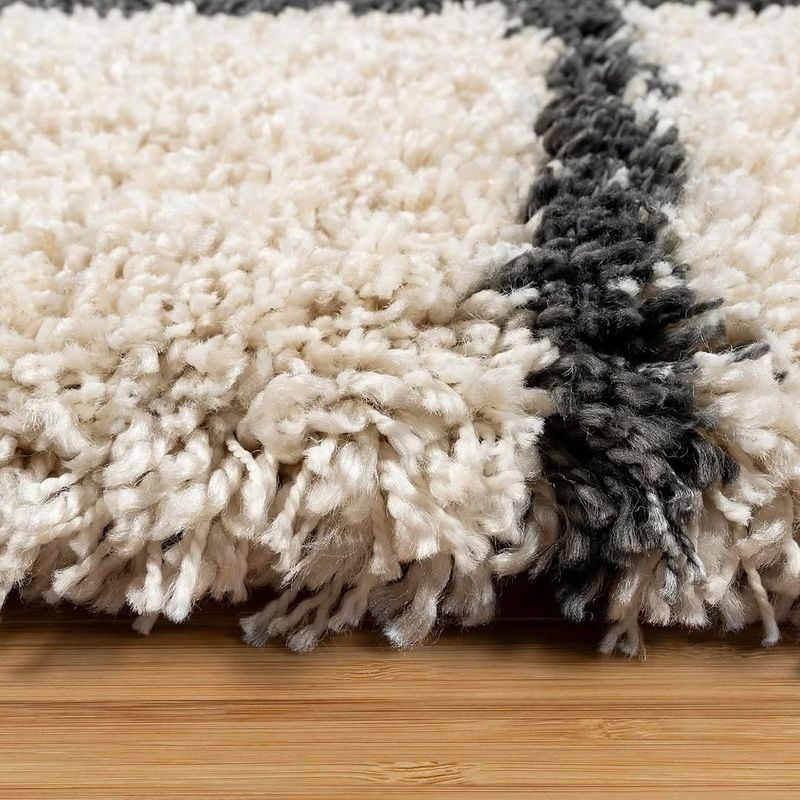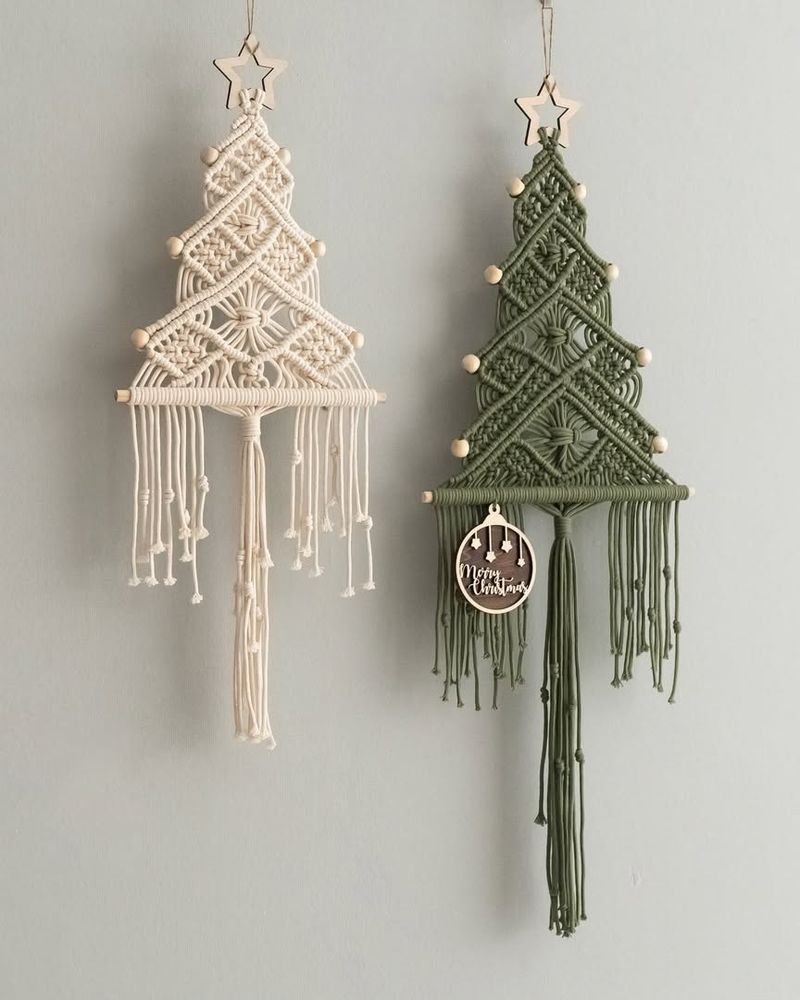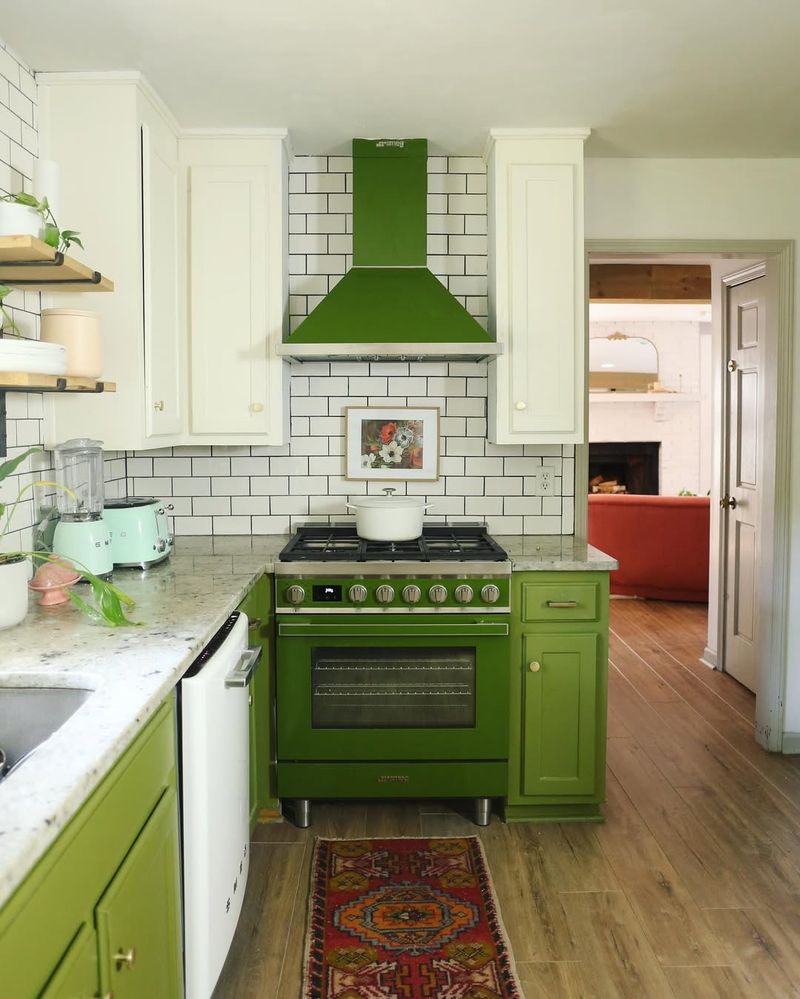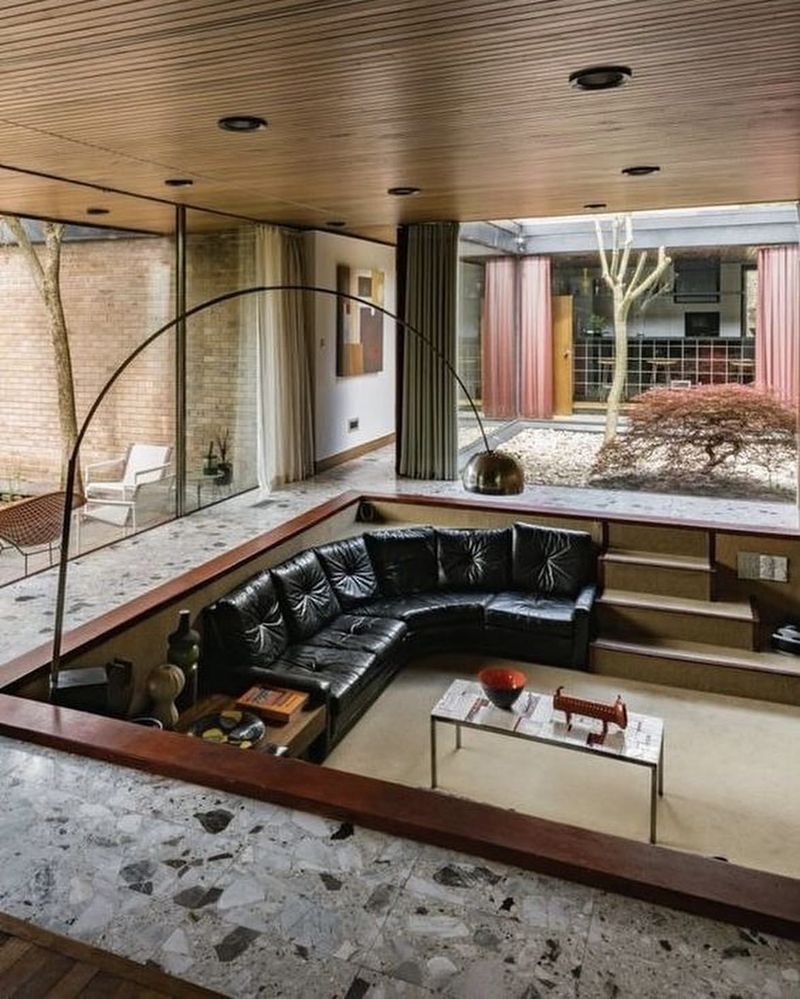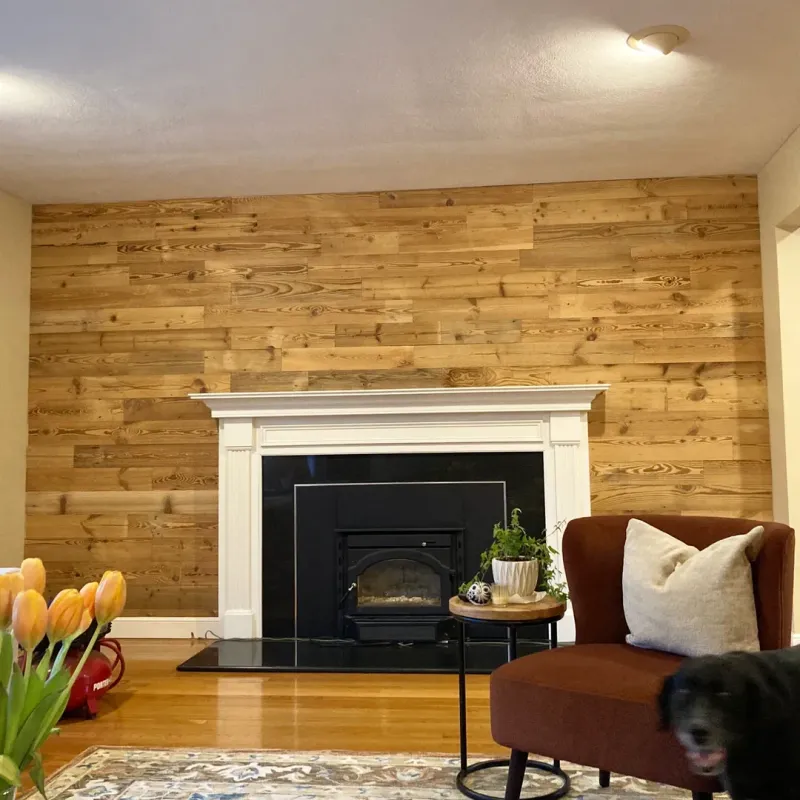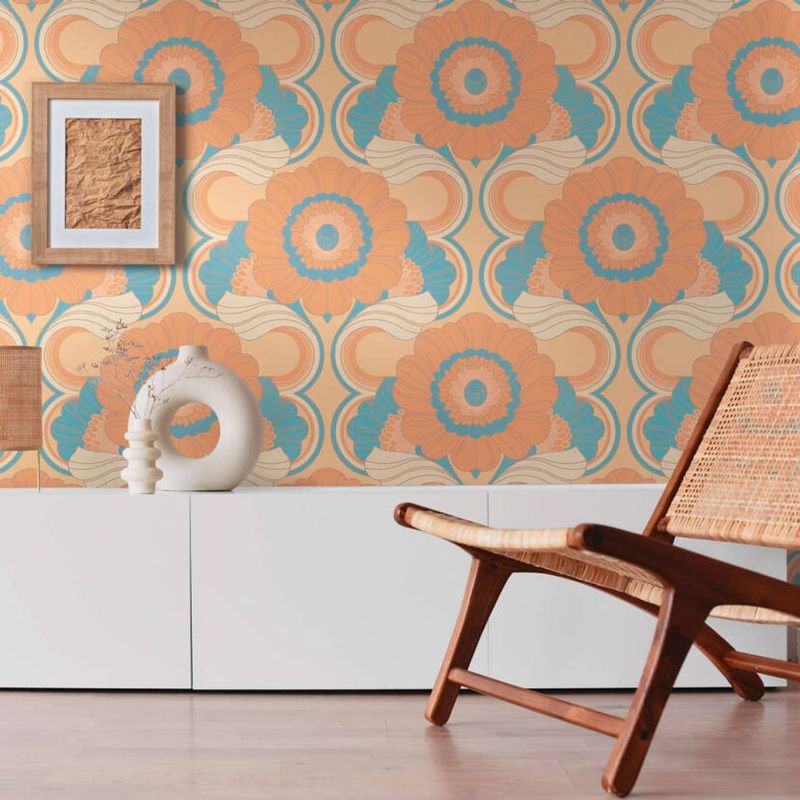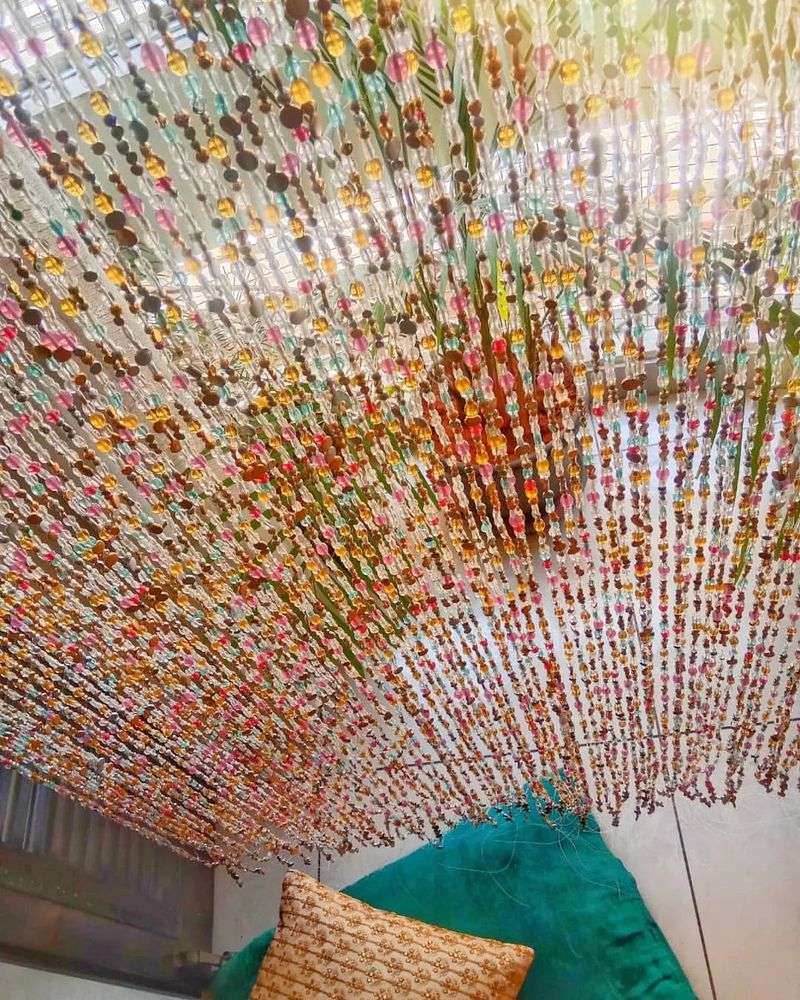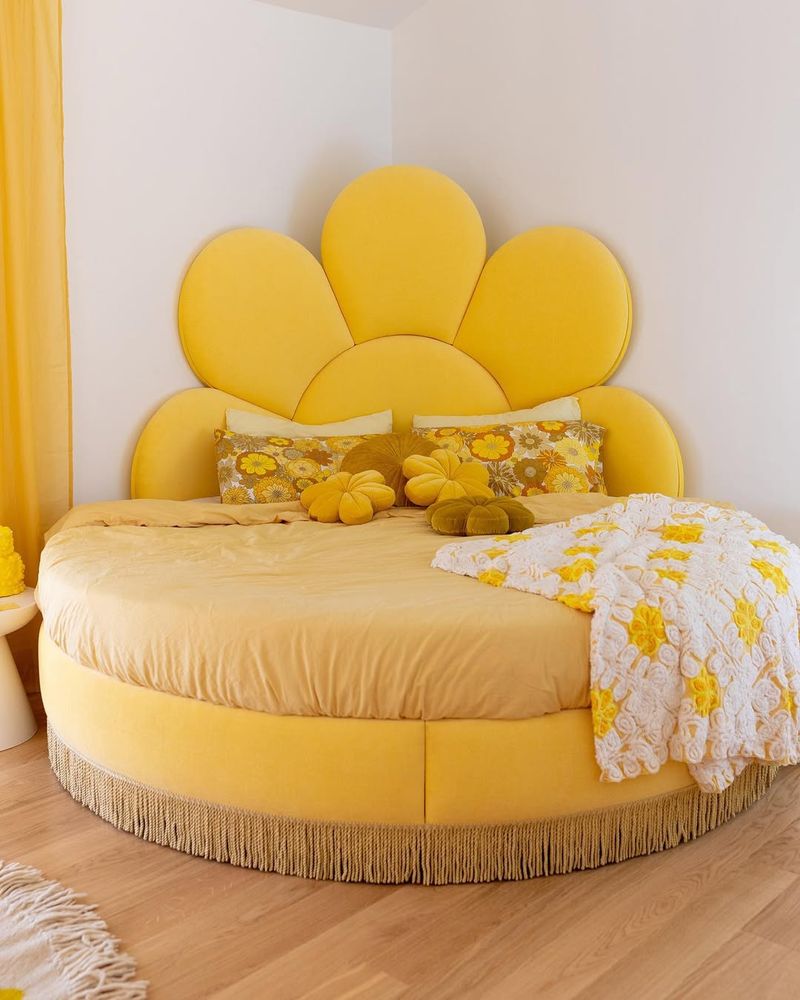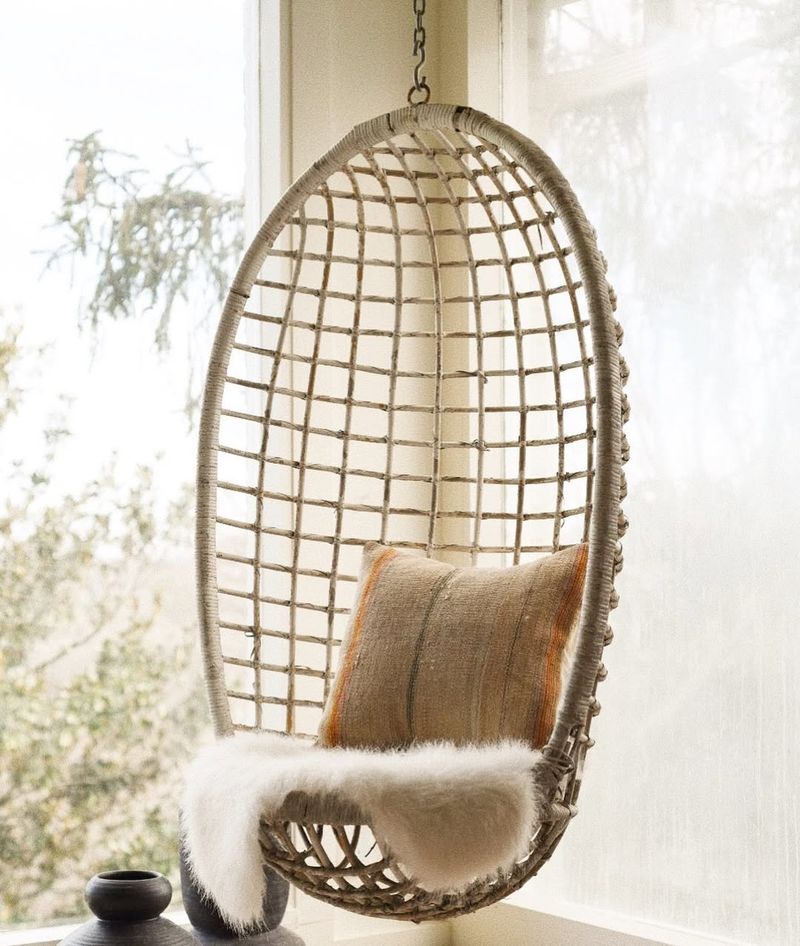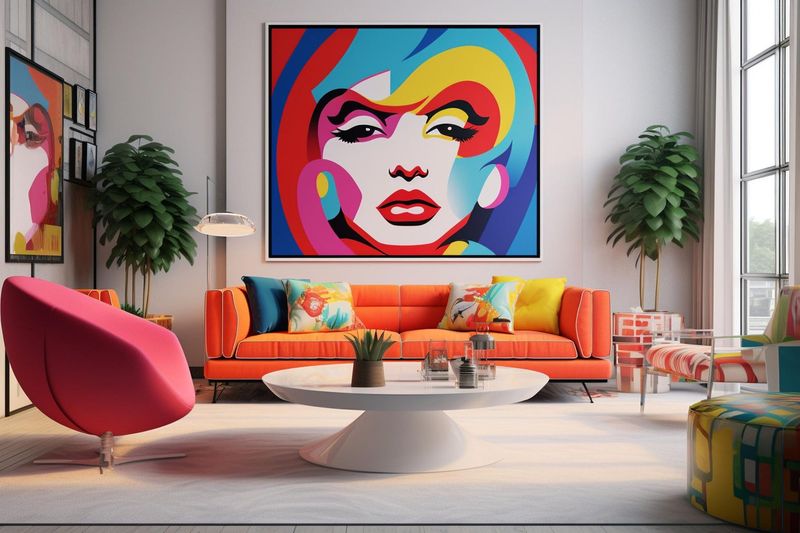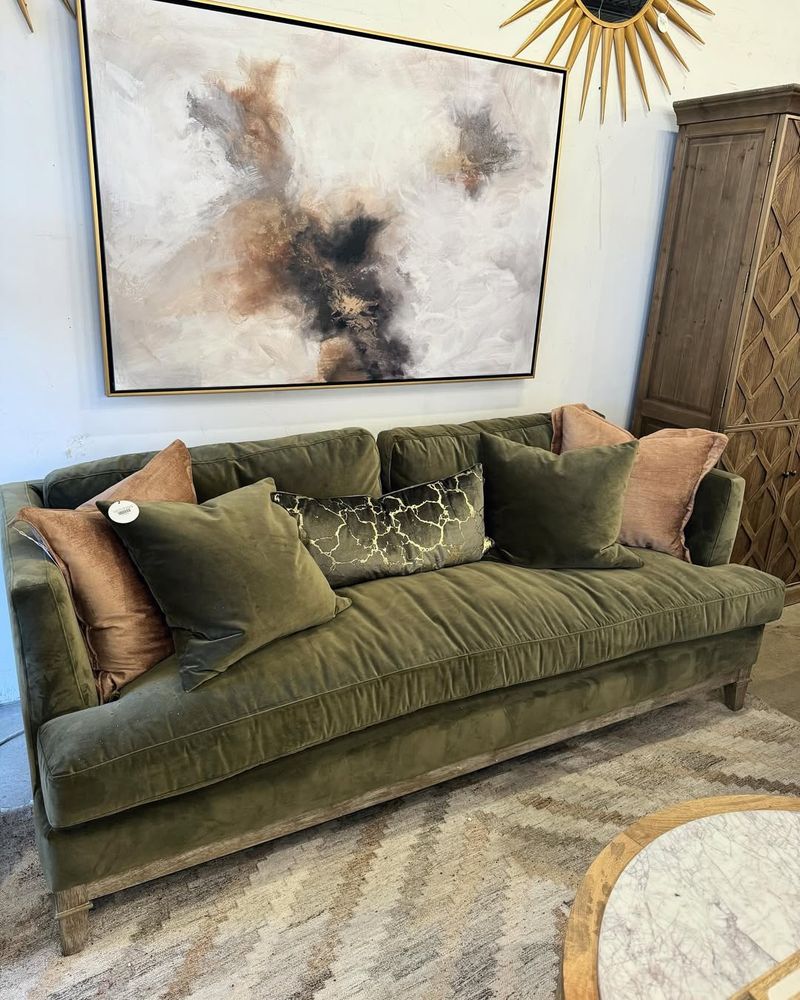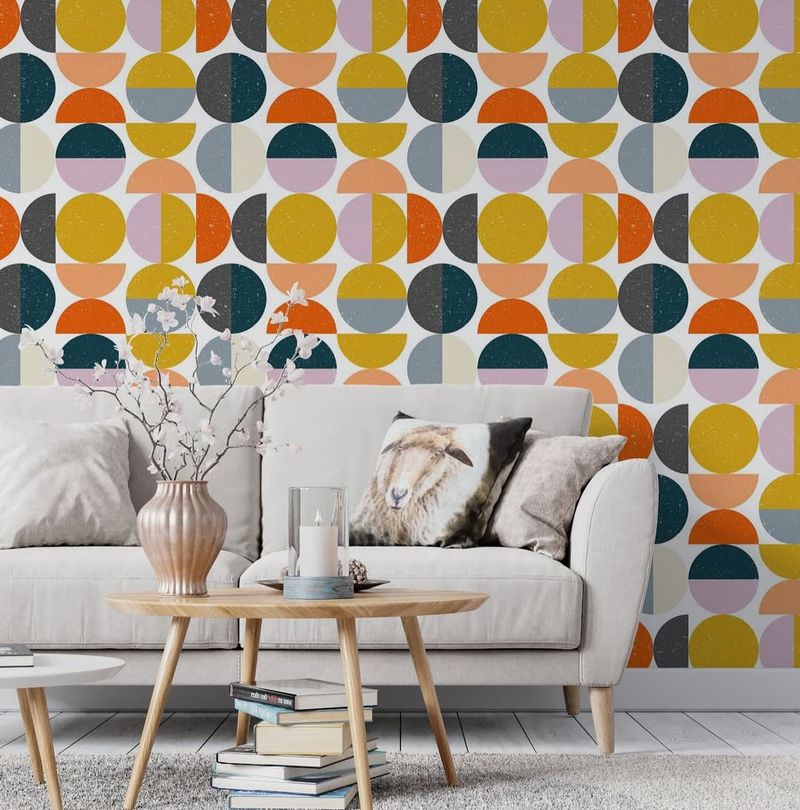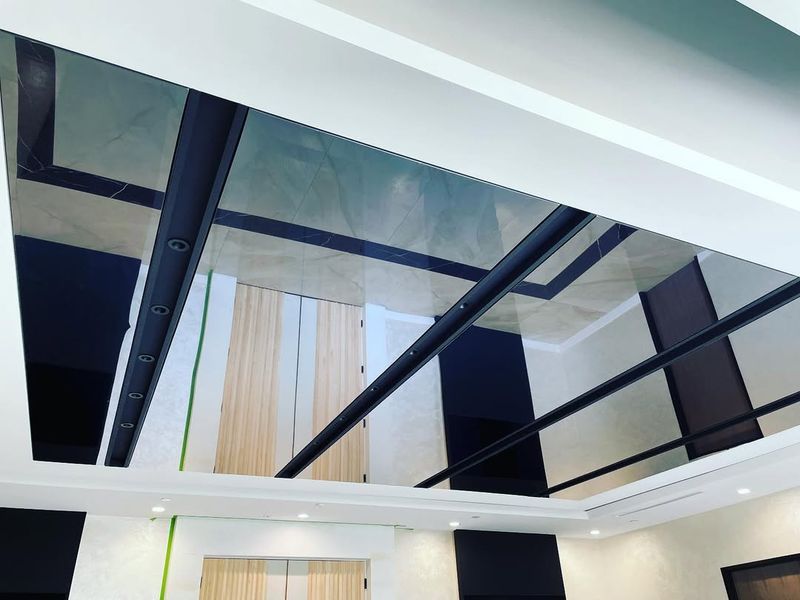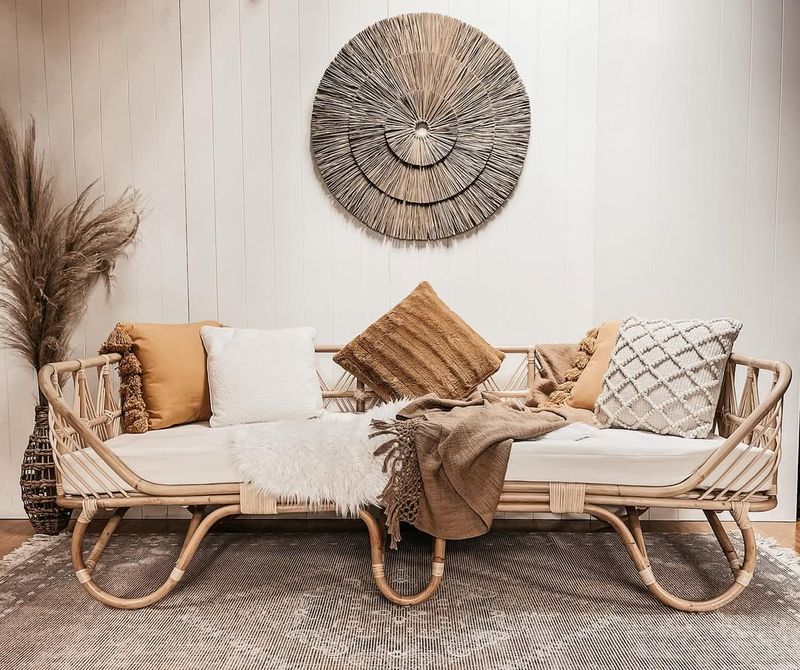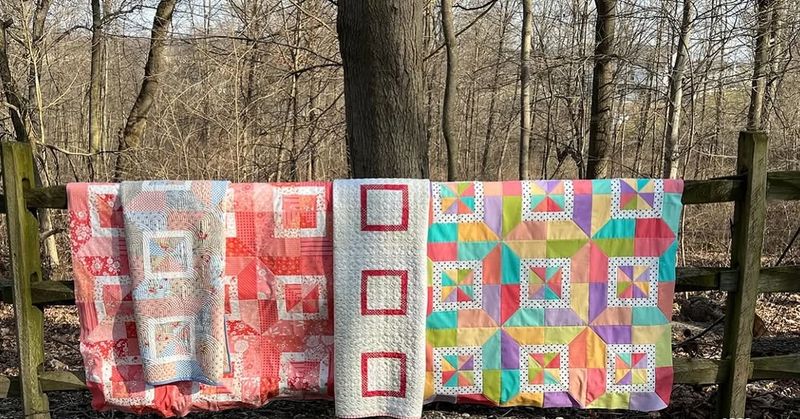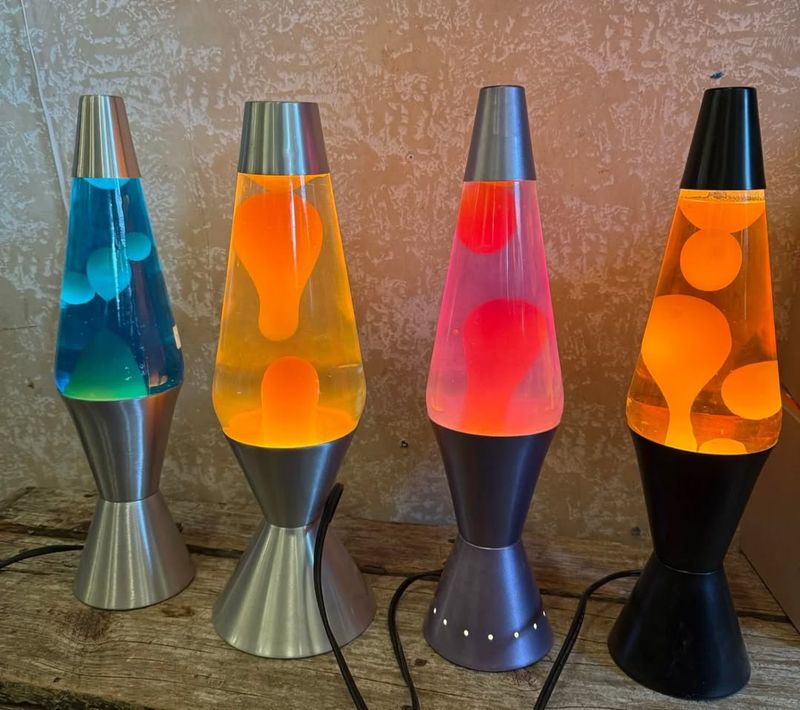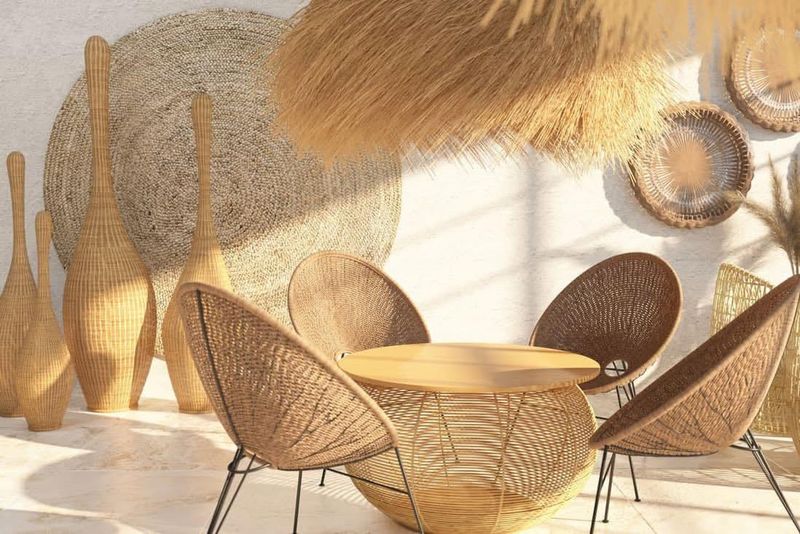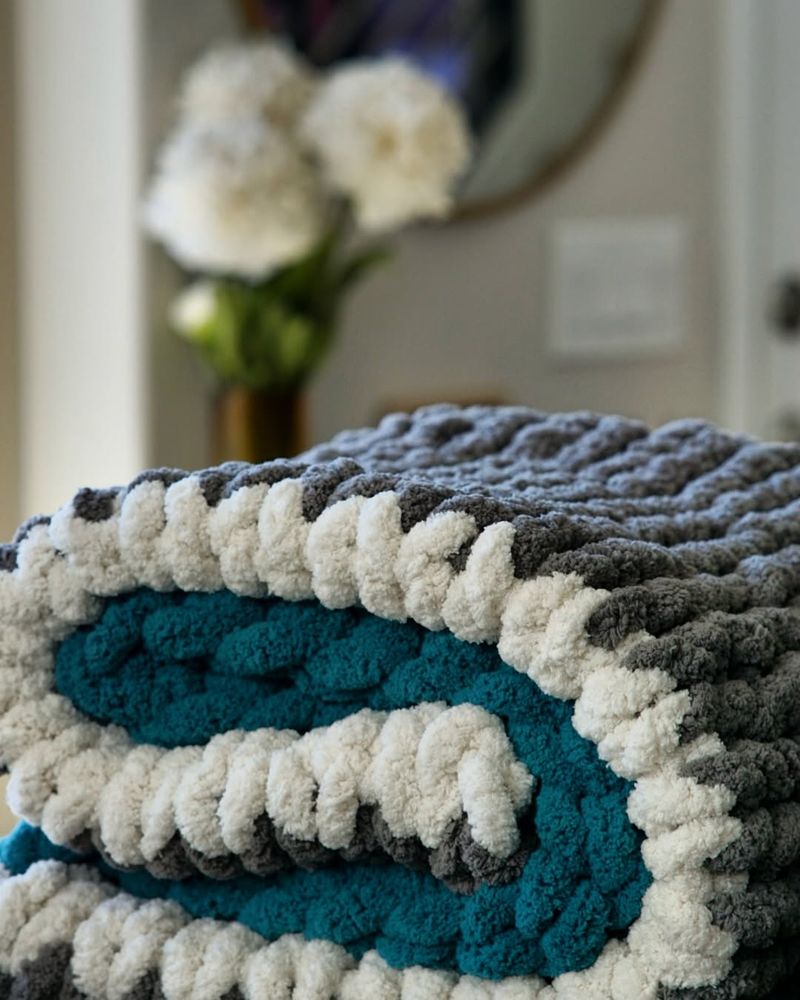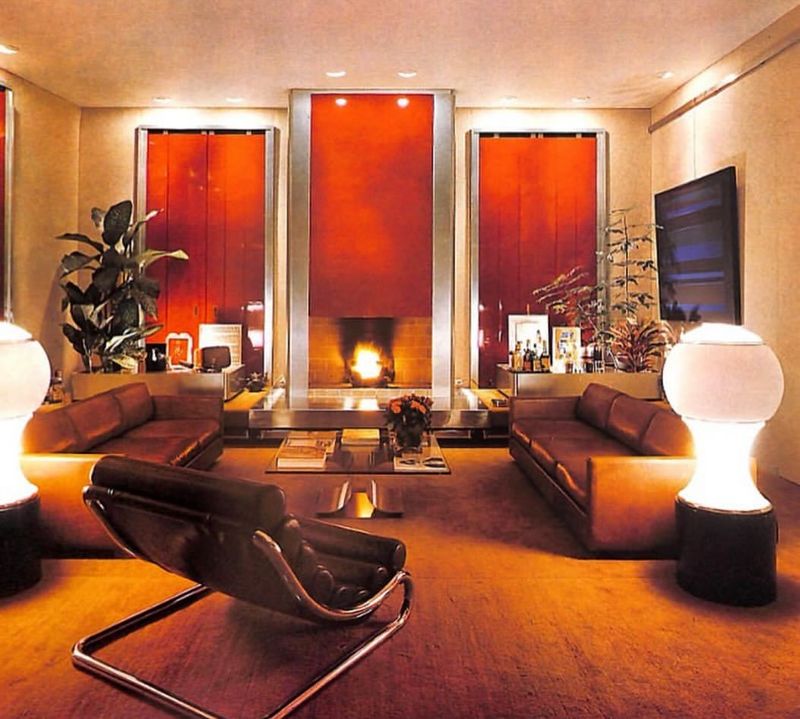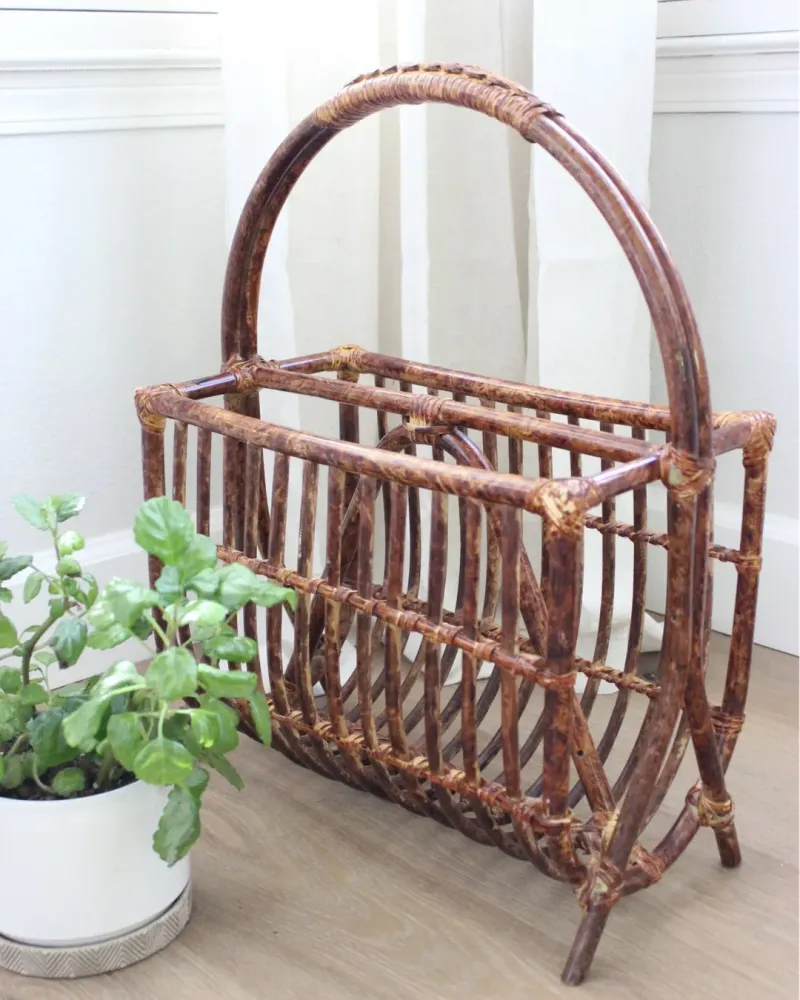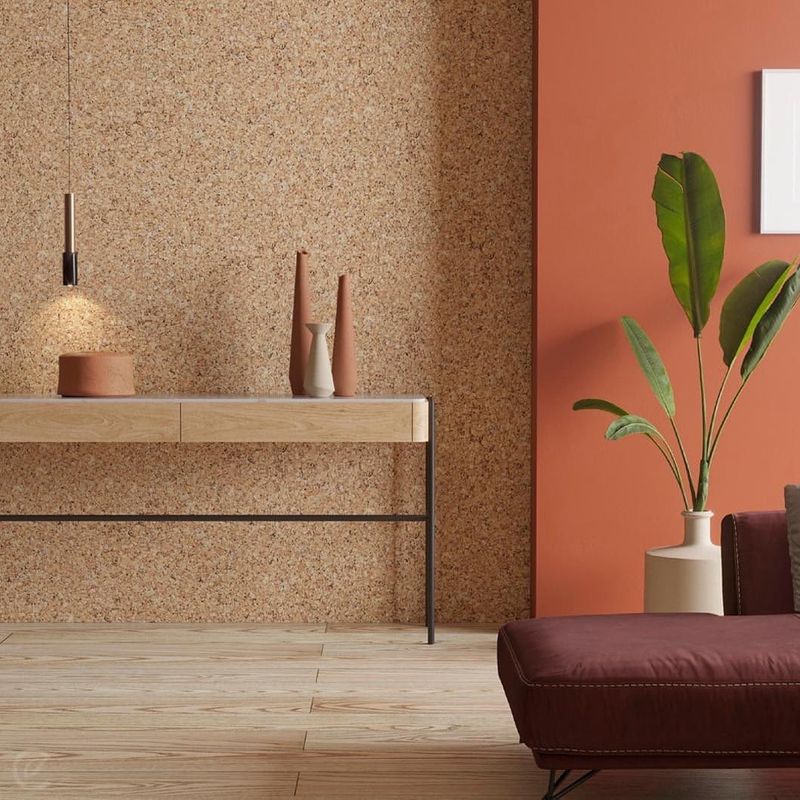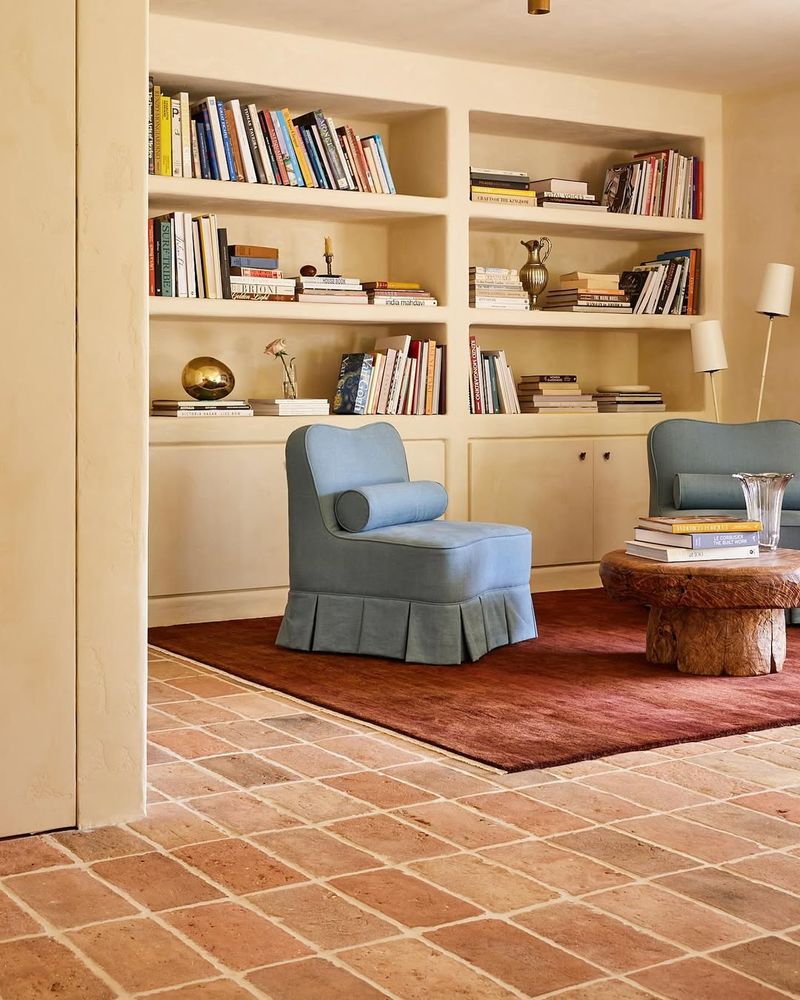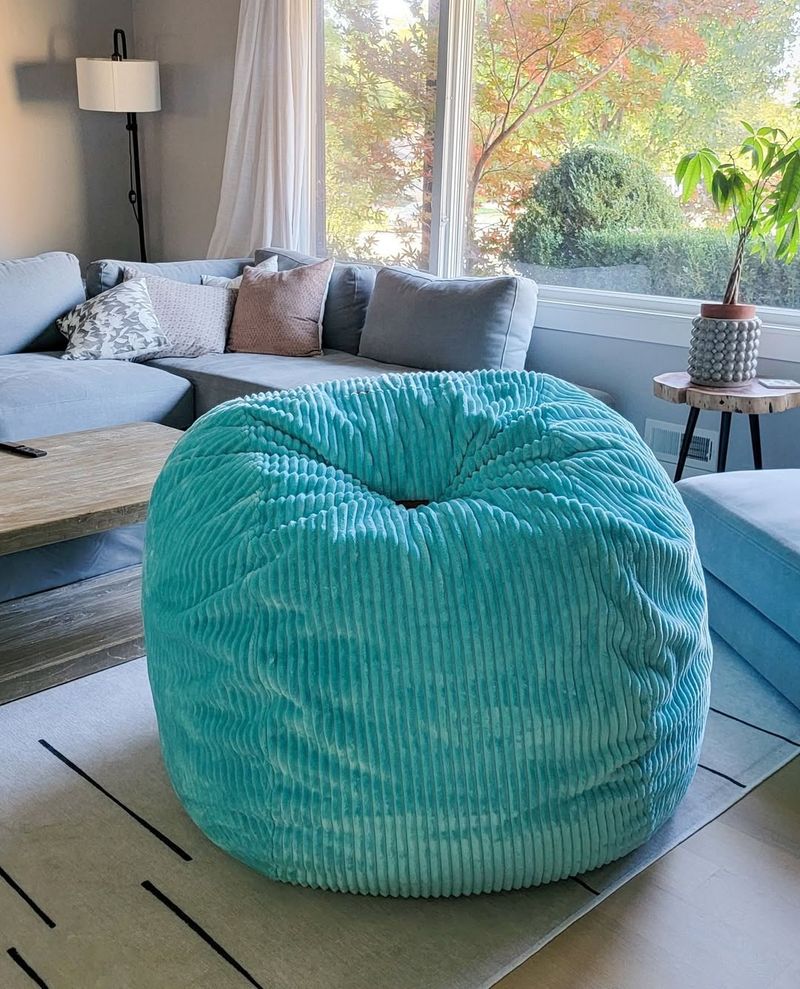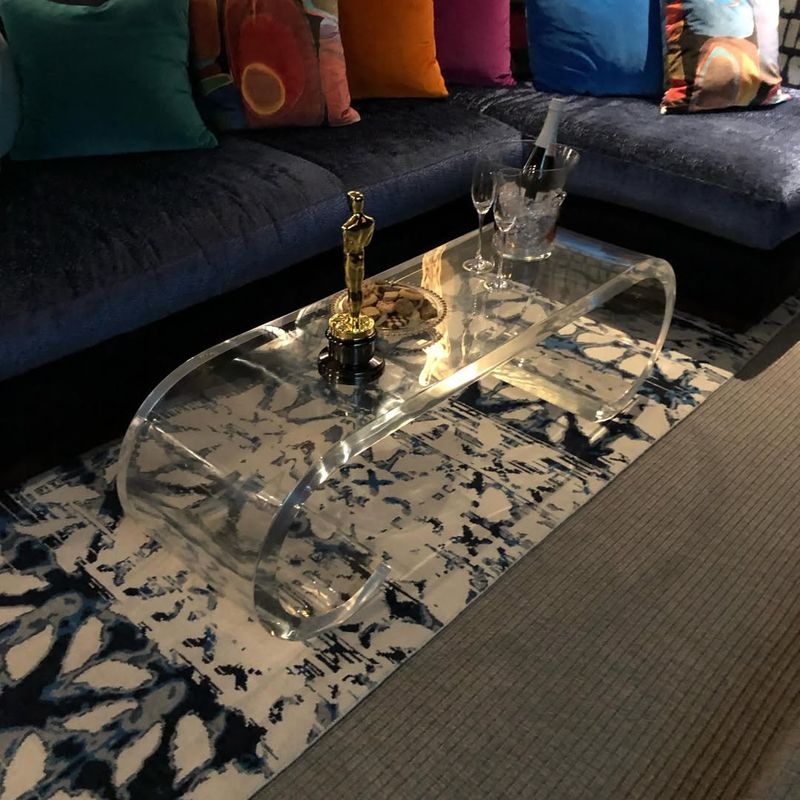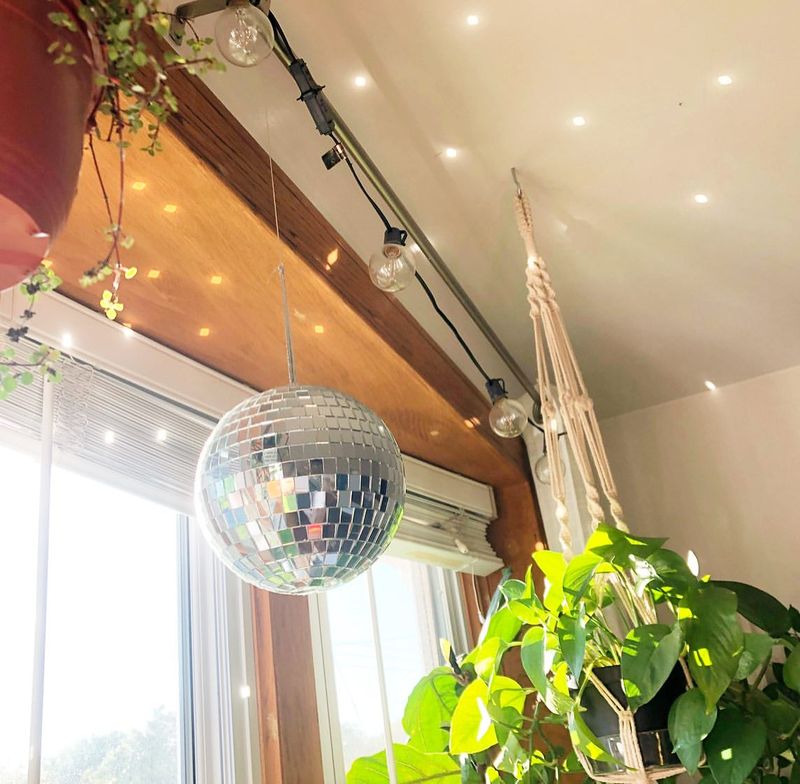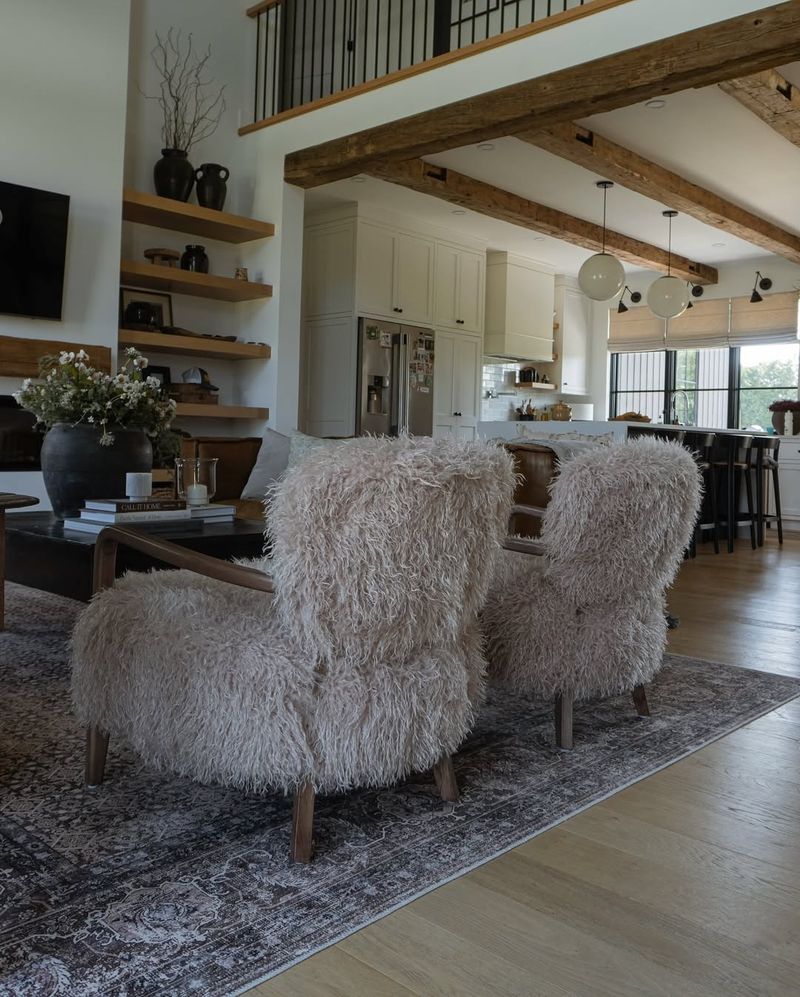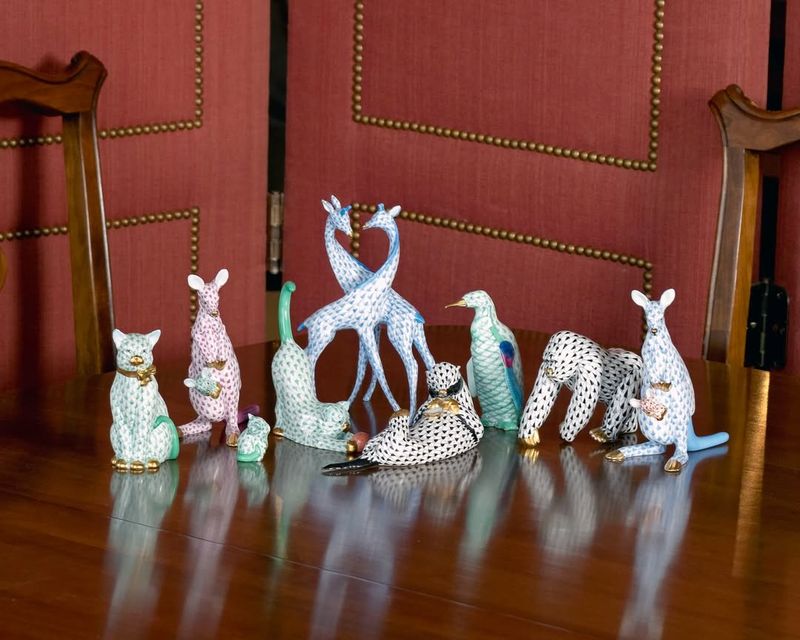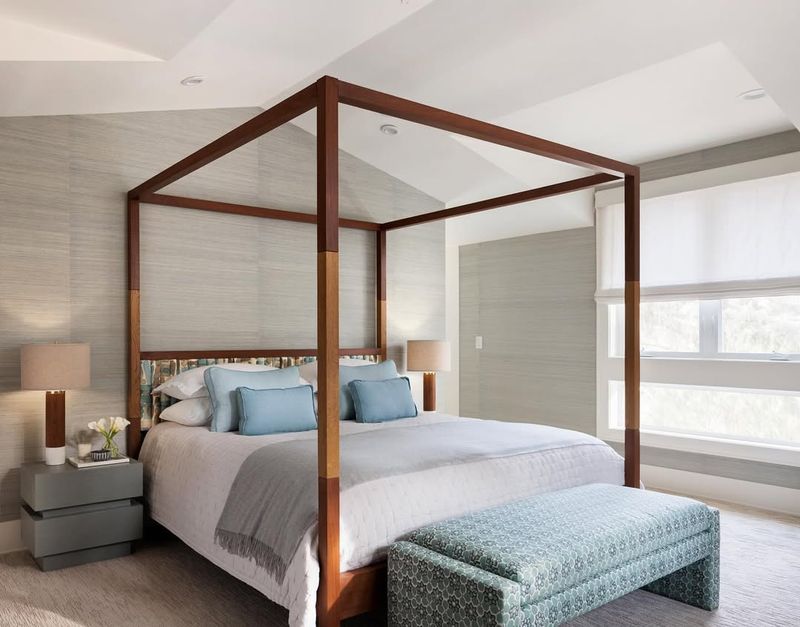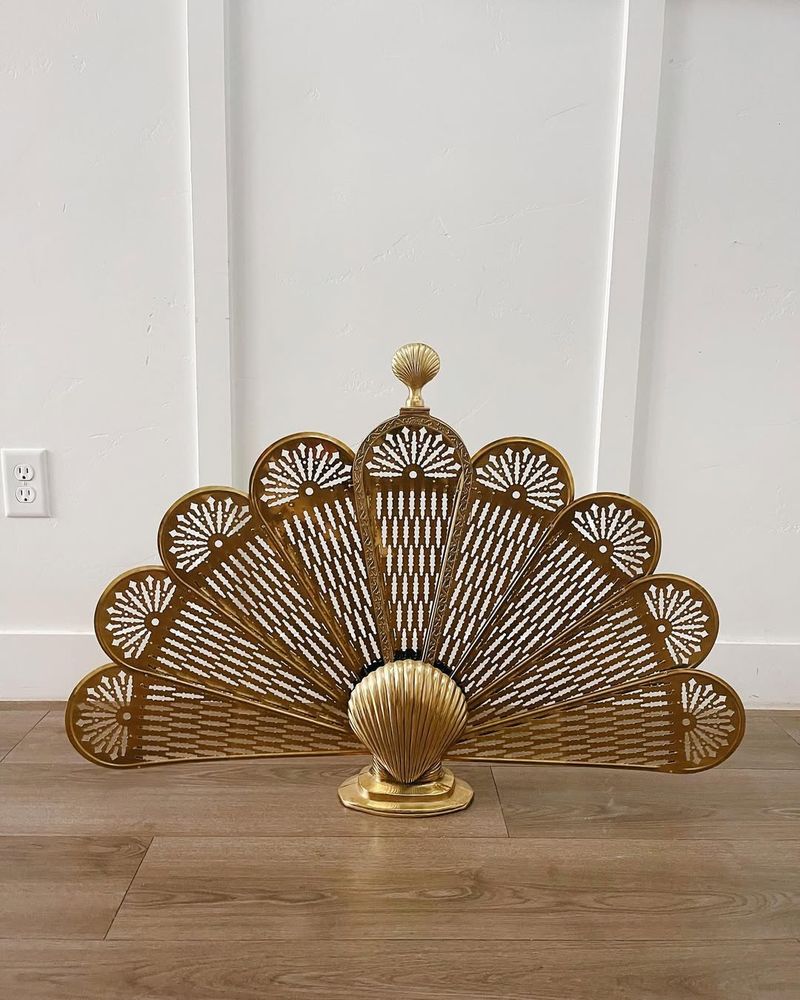Step right into the groovy time machine, because we’re heading back to the wonderfully wild world of 1970s home decor—where the louder, the better!
This was a decade that ditched subtlety in favor of shag carpets you could lose a shoe in and wallpaper that practically danced off the walls. Think bold colors, funky patterns, and a fearless love of all things extra.
Whether you lived through it or just love a good retro flashback, these 34 over-the-top trends will have you wide-eyed, chuckling, and maybe even a little inspired. Let’s get funky!
1. Shag Carpets
Remember walking barefoot on shag carpets that could double as quicksand? The ‘70s loved these plush, colorful floor coverings that were more about texture than practicality. They were perfect for hiding crumbs and small toys, but vacuuming them was a nightmare.
Imagine running a marathon with a dinosaur on your back—that’s what cleaning these was like! Shag carpets came in a variety of bright colors, making them the centerpiece of any room. They added a groovy vibe, but today’s design enthusiasts might find them a bit overwhelming.
2. Macramé Decorations
Picture a world where knots were considered an art form. Macramé was the craft that took homes by storm during the ‘70s. These intricate woven designs hung from walls, housed plants, or even formed curtains.
Each piece was a labor of love, tied with precision and a touch of bohemian spirit. The beauty of macramé was its handmade charm. It brought a touch of nature indoors, often in earthy colors that complemented the era’s aesthetic. While quaint, minimalists might see them as dust collectors today.
3. Avocado Green Appliances
If there was a color that defined the ‘70s kitchen, it was avocado green. From refrigerators to stoves, this earthy hue was everywhere, bringing a sense of nature into the heart of the home. While they seemed chic at the time, today’s eyes might find them a tad too… ripe.
Back then, matching appliances were a status symbol. It was believed that avocado green made kitchens feel cozy and inviting. For some, it was a bold choice; for others, a timeless classic in need of a modern twist.
4. Sunken Living Rooms
Imagine stepping down into a cozy pit surrounded by plush seating—a sunken living room was the epitome of ‘70s chic. It created intimate spaces for conversation, perfect for hosting groovy get-togethers or unwinding with a book.
These architectural wonders made rooms feel larger and more dynamic. However, the logistics of cleaning and navigating these spaces could be challenging. Today’s minimalists might appreciate the idea but probably without the physical dip in the floor. They remain a symbol of the era’s innovative spirit.
5. Wood Paneling
Step into the ‘70s, and you’d find walls that appeared to be straight out of a forest. Wood paneling was everywhere, transforming homes into rustic retreats. The warm, earthy tones added a sense of coziness, but they could also make spaces feel dim and enclosed.
While it added texture, it was often used in abundance, leading to what might feel like a wooden overload today. Removing or painting over paneling became a rite of passage for homeowners in later decades, seeking to lighten their interiors.
6. Bold Floral Wallpapers
Walls in the ‘70s were a canvas for artistic expression, and nothing screamed personality like bold floral wallpapers. These vibrant patterns brought life to any space, making a powerful visual statement that was hard to ignore.
Floral wallpapers came in all colors, often with oversized blooms that could make a minimalist’s head spin. They added a sense of drama and whimsy, perfect for those who weren’t afraid to make a stylish statement. Today, they are seen as retro chic, but some might still find them dizzying.
7. Beaded Curtains
Step aside doors, the ‘70s had a more whimsical way to divide spaces—beaded curtains. These dangling strands of beads were not just for decoration; they were an experience. Walking through them felt like entering another dimension of style.
Available in various colors and patterns, they added movement and texture to homes. However, they weren’t exactly private or soundproof. While charming, today’s minimalists might prefer a more solid barrier to separate spaces. Still, they remain a symbol of carefree, bohemian living.
8. Circular Beds
Imagine waking up in a bed that spins—circular beds were the ultimate in ‘70s luxury. They were often paired with velvet covers and mirrored ceilings, epitomizing the era’s love for opulence and romance.
These beds were more about style than comfort, often making traditional bedding a challenge. While they were a statement piece, today people might find them impractical. Yet, they continue to evoke a sense of nostalgia for a time when furniture was as groovy as the music playing in the background.
9. Hanging Egg Chairs
Imagine a chair that cocoons you in style—the hanging egg chair was the perfect blend of comfort and design innovation. Suspended from the ceiling, these chairs offered a unique way to relax while adding a futuristic touch to any room.
They encouraged lounging in style, becoming a favorite spot for reading or daydreaming. While they evoke nostalgia for those who lived the era, nowadays they are often seen as space hogs. Nonetheless, their quirky charm continues to inspire modern renditions in home decor.
10. Pop Art Accents
In a time where art broke free from the confines of tradition, pop art accents became a staple in ‘70s decor. Bright colors and iconic imagery transformed ordinary spaces into visual feasts. From Andy Warhol-inspired prints to comic book motifs, pop art added a playful twist to home design.
It dared to be bold, capturing the essence of the era’s rebellious spirit. While some might still appreciate its vivacious energy, others may find it an assault on their minimalist sensibilities.
11. Velvet Furniture
Imagine sinking into a sofa as soft as a cloud—velvet furniture was the ultimate in luxury during the ‘70s. Its rich texture and deep jewel tones added an air of sophistication to any room.
Velvet was not just about looks; it was about comfort, inviting you to unwind in style. While it exuded elegance, it demanded care and attention, as it was prone to wear. Minimalists of 2020s might opt for simpler fabrics, but the allure of velvet endures, bringing a touch of retro glamour to modern spaces.
12. Geometric Patterns
Forget subtlety—geometric patterns were all the rage in the ‘70s, adorning everything from walls to furniture. These bold designs played with shapes and colors, creating a sense of movement and energy.
They were a visual delight, but they could also be quite dizzying if overused. The ‘70s embraced this chaotic beauty, celebrating the clash of lines and curves. While today people might shy away from such visual noise, the era’s love for geometry remains an inspiration for modern design, albeit in a more restrained form.
13. Mirrored Ceilings
Reflecting the ‘70s love for opulence, mirrored ceilings made a bold statement in home design. They created an illusion of space and added a touch of glamor to bedrooms and living areas.
While they were meant to be luxurious, they often bordered on the ostentatious. Cleaning them was a chore, and they weren’t to everyone’s taste. Today, they are replaced with more subtle lighting solutions, but they remain a symbol of the era’s flair for the dramatic, capturing the imagination of those who dare to dream big.
14. Rattan Furniture
Rattan furniture brought a touch of the outdoors inside, embodying the ‘70s bohemian spirit. Its natural, woven texture added warmth and charm to any space, creating a relaxed, laid-back vibe.
Lightweight and versatile, rattan was a favorite for everything from chairs to headboards. It was eco-friendly before it was trendy.
Nowadays, minimalists might prefer sleek, modern lines rather than rattan, although it continues to have its moments, offering a nod to the past.
15. Psychedelic Art
The ‘70s were a time of exploration and self-expression, and psychedelic art captured that spirit in vivid detail. With swirling patterns and eye-popping colors, it was an explosion of creativity that transformed any dull wall into a kaleidoscope of imagination.
These artworks played with perception, inviting viewers to get lost in their intricate designs. While some might find them inspiring, others may feel overwhelmed by their intensity.
16. Patchwork Quilts
When it came to warmth and charm, patchwork quilts were the unsung heroes of ‘70s decor. These handmade treasures, crafted from an array of fabrics, added color and coziness to bedrooms.
Quilts told stories through their patterns, each piece of fabric a memory sewn into the whole. While they were cherished for their sentimental value, 2020’s minimalists might lean towards less patterned bedding.
However, the love for handcrafted items keeps the tradition of patchwork quilts alive, bridging the gap between past and present.
17. Lava Lamps
Few items capture the essence of the ‘70s like the mesmerizing dance of a lava lamp. As blobs of wax floated and morphed within their glass containers, they provided a soothing light show that was both entrancing and hypnotic.
Lava lamps added a sense of wonder and relaxation to any room, doubling as art pieces and mood lighting. While their novelty might wear off for minimalists seeking cleaner lines, they continue to evoke nostalgia and fascination.
18. Wicker Furniture
Wicker furniture was the darling of ‘70s patios and porches, bringing a sense of casual elegance to outdoor spaces. Its intricate weave patterns and natural hues made it a popular choice for those embracing the bohemian lifestyle.
While durable and stylish, wicker required maintenance to keep it looking fresh. Today’s minimalists might prefer more streamlined outdoor furniture.
19. String Art
String art turned simple nails and thread into masterpieces. This craft was a popular pastime in the ‘70s, allowing people to create intricate designs that adorned their walls with vibrant flair.
Whether forming geometric patterns or abstract shapes, string art was an expression of creativity and patience. While fascinating, it might seem a bit cluttered for today’s minimalist tastes.
20. Chunky Knit Throws
If comfort was the name of the game, chunky knit throws were the MVPs of ‘70s home decor. These oversized blankets added warmth and texture, making them the perfect accompaniment for chilly evenings.
Their bold colors and thick weaves made them both functional and stylish, embodying the cozy aesthetic of the era.
21. Bold Color Palettes
Forget subtlety—the ‘70s were all about bold color palettes that made a statement. Homes embraced vivid hues, from burnt orange and mustard yellow to avocado green and peacock blue.
These colors were more than just decor choices; they were expressions of individuality and freedom. While they could clash at times, the era’s fearless approach to color continues to inspire.
Currently, minimalists might prefer more neutral tones, but the boldness of the ‘70s serves as a reminder of the power of color to transform a space.
22. Bamboo Accents
Embracing the natural world, bamboo accents found their way into ‘70s homes, offering a sustainable and stylish decor option. From furniture to decor pieces, bamboo added a touch of the exotic and a nod to environmental consciousness before it was mainstream.
Lightweight and versatile, bamboo was celebrated for its strength and beauty. Although today many might favor more polished materials, bamboo remains a beloved choice for those seeking eco-friendly, natural decor.
23. Sheepskin Rugs
For those who desired luxury underfoot, sheepskin rugs were the ultimate in ‘70s indulgence. Their plush texture and warmth made them a sought-after addition to living rooms and bedrooms.
They added a touch of glamour while also serving as cozy retreats for bare feet. Although their maintenance might be daunting for today’s minimalists, sheepskin rugs continue to offer a stylish, luxurious feel that complements both retro and modern interiors.
24. Cork Walls
Cork walls were a ‘70s innovation that added texture and warmth to interiors. This versatile material was used to create unique wall surfaces that provided soundproofing and insulation.
The natural look of cork complemented the era’s earthy aesthetic, while its functionality made it a practical choice. Some might find it too rustic today, but cork is experiencing a resurgence in eco-friendly design, proving that its unique qualities still resonate with those seeking sustainable and stylish options.
25. Terracotta Tiles
A touch of warmth and earthy elegance to ‘70s homes was brought with terracotta tiles. These clay tiles, with their rich, reddish-brown hues, were a staple in kitchens and living areas, offering durability and style.
They added a rustic charm that suited the era’s love for natural materials. While they require maintenance to keep their beauty, terracotta tiles are actually still cherished for their timeless appeal.
Minimalists might appreciate their simplicity, making them a versatile choice for those seeking a blend of retro charm and modern elegance.
26. Hessian Fabrics
These fabrics, or burlap, were embraced in the ‘70s for their rustic, natural appeal. This coarse textile was used in everything from curtains to upholstery, adding texture and a sense of earthiness to interiors.
While not the softest material, its raw charm complemented the decade’s bohemian vibe. Nowadays, minimalists might prefer more refined fabrics.
27. Oversized Bean Bags
Comfort was king in the ‘70s, and oversized bean bags were the throne. These giant, squishy seats offered a relaxed vibe, perfect for lounging and socializing.
Their bold colors and casual style made them a popular choice for living rooms and dorms alike. While they might seem impractical to some minimalists, bean bags continue to evoke a sense of nostalgia and fun, proving that comfort and playfulness never go out of style.
28. Lucite Furniture
Acrylic furniture was a futuristic trend that captivated ‘70s homes with its transparent allure. From coffee tables to chairs, lucite pieces offered a modern, almost ethereal aesthetic that was both stylish and functional.
Their transparency created an illusion of space, making them ideal for smaller rooms. Today’s minimalists might appreciate their simplicity and elegance.
29. Disco Balls
No ‘70s party was complete without the dazzling spectacle of a disco ball. These sparkling spheres turned any room into a dance floor, capturing the era’s love for nightlife and glamour.
Their reflective surfaces scattered light in every direction, creating a magical atmosphere that was impossible to resist. Although a disco ball remains an iconic symbol of celebration and joy, minimalists currently prefer more understated lighting.
30. Faux Fur Accents
If luxury was the goal, faux fur accents were the ‘70s answer. These plush, textured elements added warmth and opulence to interiors, often found in the form of pillows and throws.
While they mimicked the real thing, their ethical appeal made them a popular choice. They offered a touch of glamour without the guilt. Today’s minimalists might shy away from such bold textures, but faux fur continues to add a cozy, stylish touch, proving that some trends remain timeless.
31. Porcelain Animals
Quirky and whimsical, porcelain animals were a beloved decor trend in the ‘70s. These delicate figurines adorned shelves and mantelpieces, adding a playful touch to homes. From elegant swans to cheeky squirrels, they captured the imagination with their intricate details and glossy finishes.
Some might see them as dust collectors, but they continue to charm collectors and enthusiasts. 2020s minimalists, however, might opt for fewer knick-knacks.
32. Canopy Beds
For those seeking a touch of romance, canopy beds were the ‘70s dream. Draped in sheer fabrics, these beds created a private oasis, offering a sense of luxury and comfort.
They were more than just beds; they were retreats from the outside world, perfect for unwinding and daydreaming. Nowadays, you are more likely to see beds with simpler lines, although canopy beds continue to capture the imagination with their regal allure.
33. Tiffany Lamps
Tiffany lamps added a touch of artistry and elegance to ‘70s homes with their colorful stained glass designs. These intricate lamps cast a warm, inviting glow, making them both functional and decorative.
Each lamp was a masterpiece, with its vibrant patterns and craftsmanship. As fun and colorful as they are, today you are more likely to see more simple designs with a tad less color.
34. Shell Motif Decor
For those who longed for the sea, shell motif decor brought a touch of the ocean into ‘70s homes. From soap dishes to wall art, these nautical themes added a whimsical, beachy vibe.
While charming, they could sometimes border on kitschy. That is to say, you won’t see it in as many minimalists’ homes as they often go for something more streamlined.


